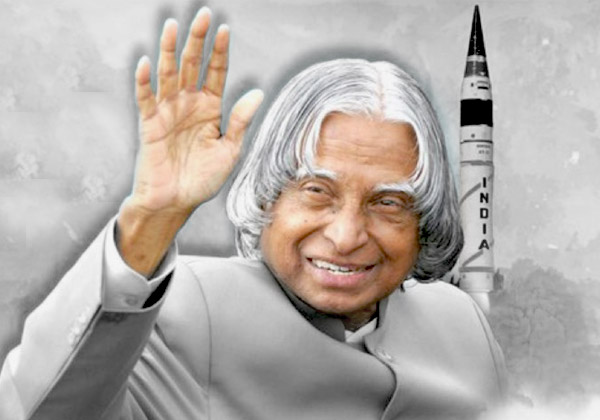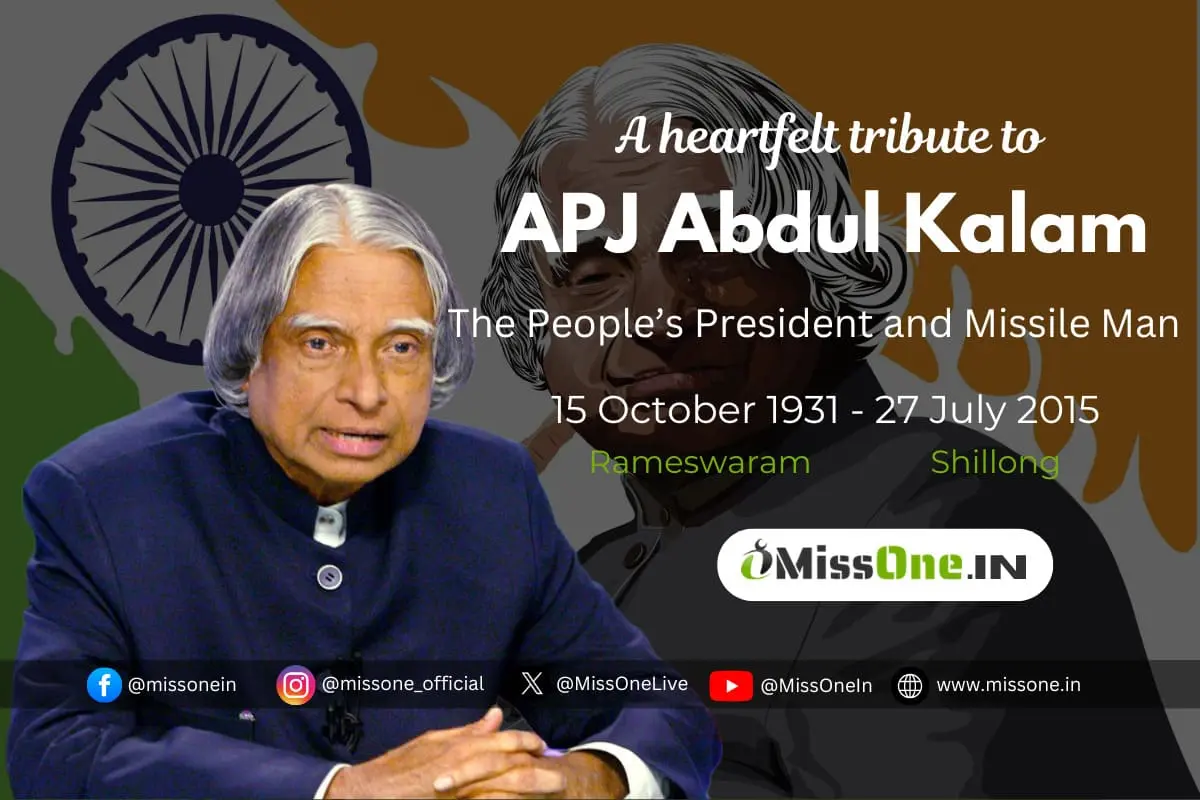Few leaders have touched the hearts of millions the way Dr. APJ Abdul Kalam did. A scientist, a teacher, and India’s most beloved President, Kalam’s life was a testament to hard work, humility, and unwavering dedication to the nation. This Tribute to APJ Abdul Kalam is not just about his achievements but also about the values he stood for—simplicity, perseverance, and the power of dreams.
Even years after his passing, his words continue to inspire students, scientists, and dreamers across the world. Let’s take a journey through his extraordinary life.
Early Life and Humble Beginnings
A Simple Childhood in Rameswaram
Avul Pakir Jainulabdeen Abdul Kalam was born on October 15, 1931, in the small coastal town of Rameswaram, Tamil Nadu. His father, Jainulabdeen, was a boat owner and imam at the local mosque, while his mother, Ashiamma, was a homemaker. The family wasn’t wealthy, but they were rich in values—honesty, discipline, and compassion.
Young Kalam sold newspapers to support his family, yet he never let financial struggles dim his curiosity. He was fascinated by flight and often watched seagulls, dreaming of flying one day.
Education Against All Odds
Kalam was a bright student, but his path wasn’t easy. After completing school at Schwartz Higher Secondary School, he pursued physics at St. Joseph’s College but soon realized his passion lay in engineering.
In 1954, he joined the Madras Institute of Technology (MIT) to study aerospace engineering. The fee was ₹1,000, a huge sum for his family. His sister, Zohara, mortgaged her jewelry to help him, a sacrifice Kalam never forgot.
Career: From Scientist to Missile Man
Early Days at ISRO and DRDO
After graduating, Kalam joined India’s defense research organizations. At ISRO (Indian Space Research Organisation), he worked on the SLV-III, India’s first satellite launch vehicle. Though the first launch failed in 1979, Kalam’s team learned from mistakes and succeeded in 1980, making India a space-faring nation.
The Rise of India’s Missile Program
Kalam’s biggest contribution came as the chief of India’s Integrated Guided Missile Development Program (IGMDP). Under his leadership, India developed:
- Prithvi (short-range ballistic missile)
- Agni (medium-range ballistic missile)
- Akash (surface-to-air missile)
- Nag (anti-tank missile)
His work earned him the title “Missile Man of India.”
A Surprising Turn: Presidency
In 2002, Kalam was elected as India’s 11th President. Unlike traditional politicians, he connected deeply with people, especially students. He often said, “Dream, dream, dream. Dreams transform into thoughts, and thoughts result in action.”
His presidency was marked by accessibility—he replied to every child’s letter and even kept his personal number open for scientists to call him directly.

Awards and Global Recognition
Dr. Kalam received numerous honors, including:
- Bharat Ratna (1997) – India’s highest civilian award
- Indira Gandhi Award for National Integration (1997)
- Von Braun Award (2013) – For his contributions to space research
- Honorary doctorates from over 40 universities worldwide
Despite fame, he remained humble, often saying, “If you want to shine like the sun, first burn like it.”
The Teacher at Heart
Even after his presidency, Kalam returned to teaching, inspiring young minds at IIMs and universities. His books, like “Wings of Fire” and “Ignited Minds,” remain bestsellers.
His Final Moments
On July 27, 2015, while delivering a lecture at IIM Shillong, Kalam collapsed and passed away. The nation mourned the loss of a true visionary.
Conclusion: A Legacy That Lives On
This Tribute to APJ Abdul Kalam is a reminder that greatness isn’t about power or wealth—it’s about impact. Kalam proved that with determination, even a newspaper boy from Rameswaram can change a nation.
His life’s message is clear: “You have to dream before your dreams can come true.” And for millions, his dreams continue to light the way.
Final Thoughts:
If you ever doubt your potential, remember Kalam’s journey. Share this tribute, discuss his teachings, and keep his spirit alive. After all, the best way to honor a legend is to live by his values.
Would you like to add any personal memories of Dr. Kalam? Share in the comments!

FAQs About APJ Abdul Kalam: Life, Achievements, and Legacy
Lesser-Known Facts About APJ Abdul Kalam
1. The Rocket Scientist Who Wasn’t Allowed In
In 1963, a young Kalam arrived at Thumba’s St. Mary Magdalene Church (converted into ISRO’s first launch control room) for India’s maiden rocket launch. Guards stopped the Muslim scientist from entering the Christian worship area. Rather than protest, Kalam waited respectfully until Hindu colleague H.G.S. Murthy voluntarily swapped roles with him outside. This incident became a celebrated example of India’s scientific unity – a Muslim scientist, Christian location, and Hindu colleague working together for progress. Kalam later wrote: “Science has no religion, but scientists do – and that day, our humanity mattered more.”
2. His Secret Breakfast Ritual
Despite becoming President, Kalam maintained his simple South Indian breakfast habit: idli with coconut chutney and coffee. He would often eat with scientists and students in canteens rather than presidential dining halls.
3. The Pocket Notebook Habit
Kalam always carried 4 notebooks:
- Ideas for national development
- Technological innovations
- Inspirational quotes
- Contact details of young scientists he mentored
4. Turned Down a Lucrative NASA Job
After completing his aerospace engineering, Kalam was offered a position at NASA in 1960 but chose to work for India’s DRDO at one-tenth the salary because “my nation needed me more.”
5. The Veena-Playing Scientist
Few know Kalam was trained in Carnatic music and could play the veena. He believed music and science both required creativity and discipline.
6. His Unconventional Exercise Routine
Instead of gym workouts, Kalam practiced “yogic flying” (a TM technique) for 20 minutes daily and could do 50 push-ups even at 70.
7. The Presidential Salary Sacrifice
As President, Kalam donated 75% of his salary to educational causes and kept only enough for his basic needs. He continued wearing his signature simple clothes.
During a 2003 visit to Moscow, Russian officials were stunned to see India’s President pulling his own suitcase at the airport. When aides rushed to help, Kalam smiled: “This 7kg bag contains my books and medicines. If I can’t carry my own weight, how can I bear my nation’s?” The incident inspired Russia’s “Carry Your Own Bag” protocol for visiting dignitaries. His suitcase contents? 3 notebooks, 2 kurta-pyjama sets, and the Bhagavad Gita.
8. The Forgotten Patent
In 1994, Kalam collaborated with Dr. B. Soma Raju to design the “Kalam-Raju Stent” – a revolutionary coronary stent costing just ₹10,000 (vs ₹1 lakh for imported ones). Despite holding the patent, he refused royalties saying: “Healthcare shouldn’t be a business.” Today, over 2 million Indians have benefited from this design, though few know its connection to the Missile Man.
9. His Last Unfinished Project
Days before his death, Kalam was working on “Kalam-NSS Roadmap 2030” – a plan to make India’s roads accident-free using AI and sensor technology.
10. The Mysterious Black Box
After Kalam’s death, aides discovered 500+ handwritten replies to children’s letters in his “black box”, each personalized with sketches of rockets or birds. His diary entry explained why they were unsent: “Replied but not posted – must visit Jaipur’s Anjali (age 9) to explain her satellite design properly. Digital answers lack soul.” The box also contained railway tickets for 37 planned school visits he never got to make.
11. The Night He Became ‘People’s President’
On July 18, 2002, just hours before his presidential oath, Kalam sneaked out of Rashtrapati Bhavan in a disguise (ordinary kurta and sunglasses) to visit a nearby slum. When children recognized him, he spent the night listening to their dreams under a streetlight. Next morning, he took oath with their drawings in his pocket – the origin of his famous quote: “My most prestigious designation isn’t President; it’s being called ‘Kalam Sir’ by children.”

